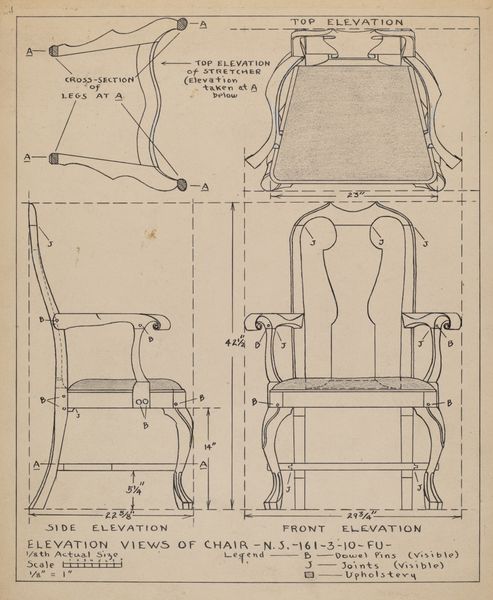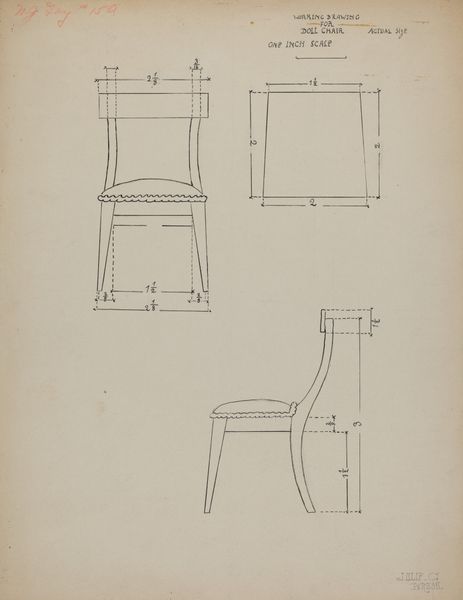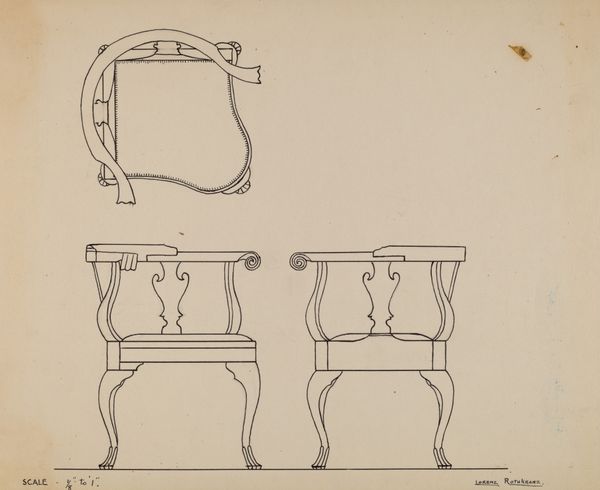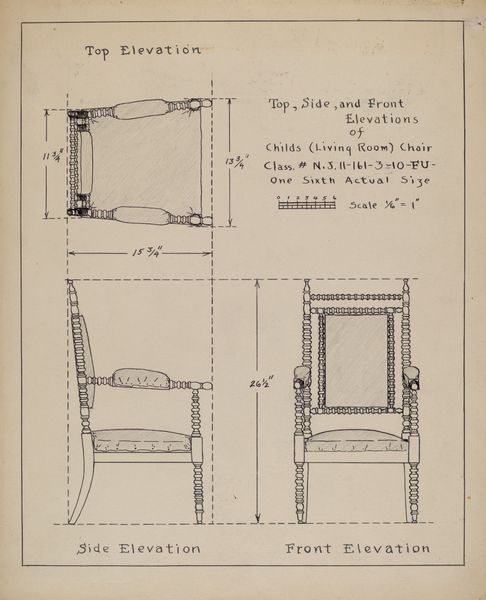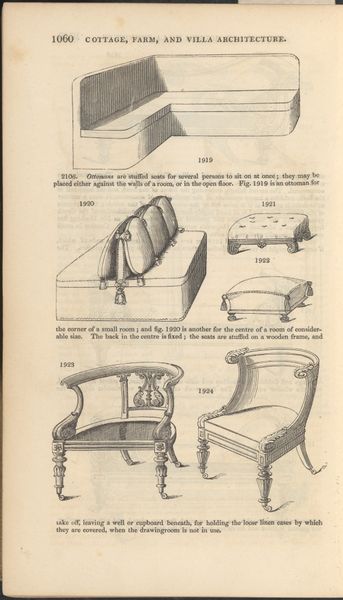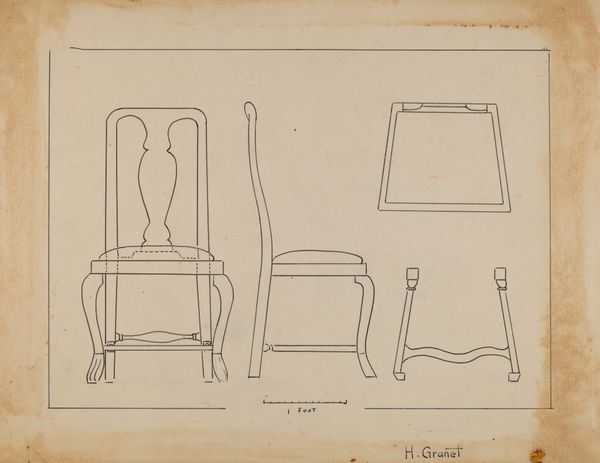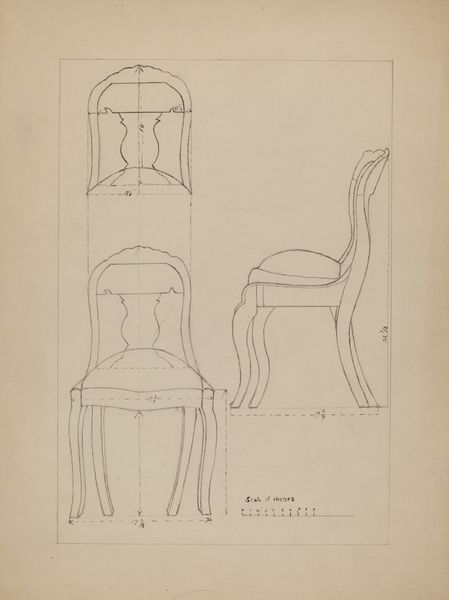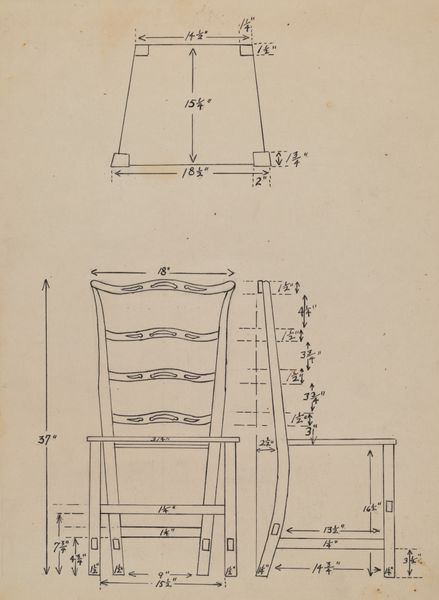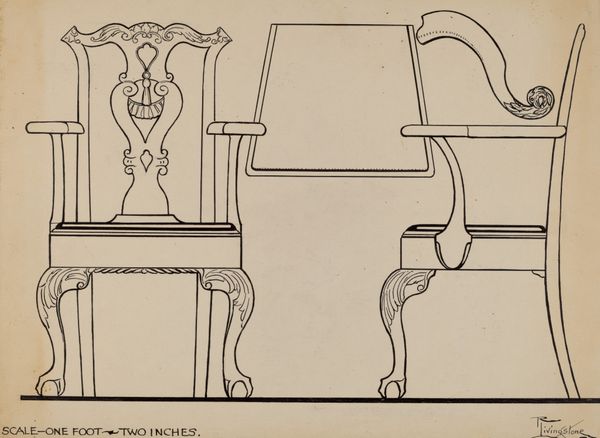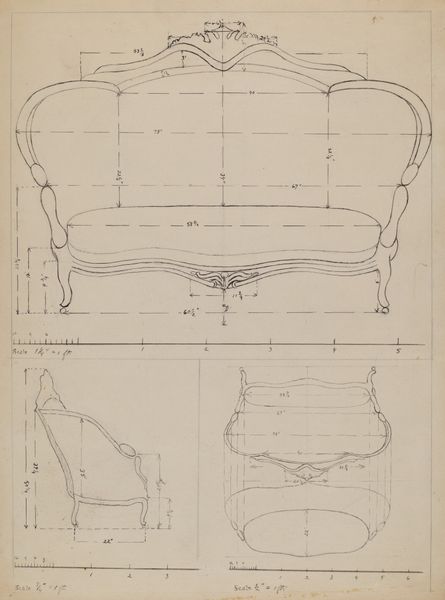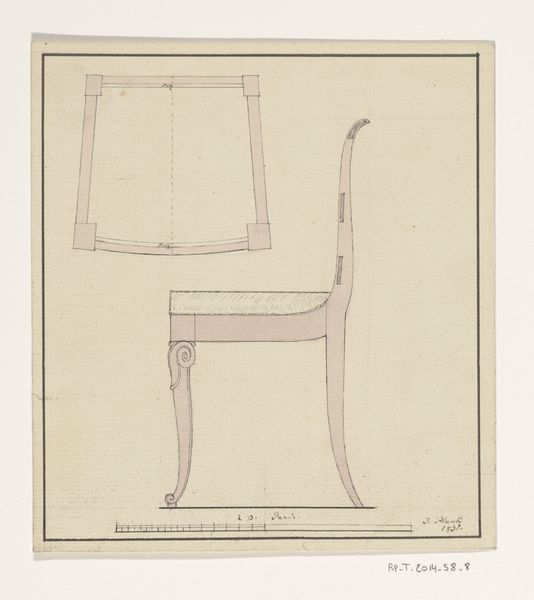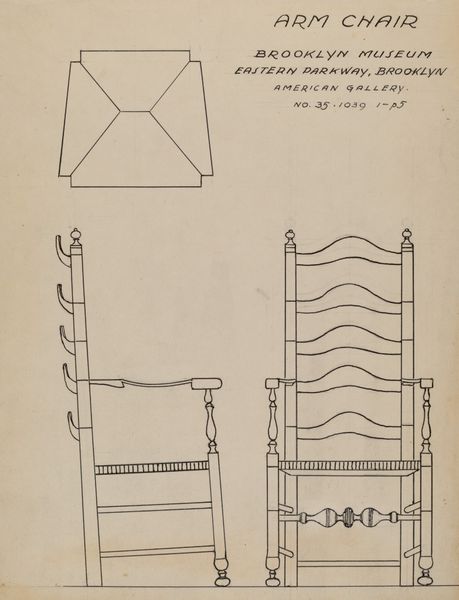
drawing, pencil
#
drawing
#
geometric
#
pencil
Dimensions: overall: 26.7 x 20.3 cm (10 1/2 x 8 in.)
Copyright: National Gallery of Art: CC0 1.0
Curator: So, here we have John Dieterich's "Chair," a pencil drawing from around 1936. Editor: Yes, and what strikes me is the diagrammatic approach, almost like a blueprint for a physical object. It feels very functional, but with these elegant curves, there's also a definite aesthetic sensibility. What do you make of it? Curator: It's fascinating to consider this drawing in the context of the 1930s. Think about the rise of industrial design alongside the lingering influence of more traditional craftsmanship. The clean lines and measured dimensions hint at mass production, yet the flourishes, the carved details, evoke hand-made artistry. Where do you think it would have existed at that intersection, conceptually? Editor: That makes a lot of sense. I suppose the drawing exists as a mediator, representing both the machine and the artist. It looks like it would have belonged to a manufacturing blueprint file as much as it belonged in a sketchbook in a museum. Curator: Exactly! And consider, too, who was designing these chairs, and for whom? The color is annotated to be "walnut," so we can ask about class and consumption during that period. What kind of home might this chair have occupied? What statements would it make about wealth and access during a really turbulent time of economic hardship? Editor: Hmm, interesting point. The curves and details now strike me as possibly signaling an attempt to maintain pre-Depression ideals, a clinging to established notions of beauty amidst widespread struggle. Curator: Precisely! And by deconstructing even a functional object, such as a chair, we can glean the deeper narratives of the culture from which it originates. These items also provide invaluable historical reference for movements surrounding material sciences and modernism to provide information. Editor: I never thought about design in such a comprehensive historical manner before! Curator: Every artwork has stories to tell. We simply need to ask the right questions and examine its role in the broader narrative of society and labor at the time. Editor: Thanks, that really broadened my perspective!
Comments
No comments
Be the first to comment and join the conversation on the ultimate creative platform.
